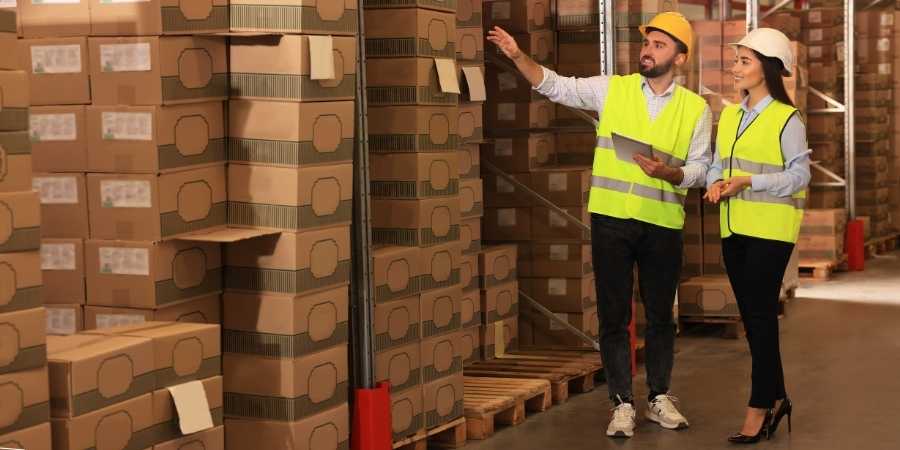What does it take to move millions of tons of goods across the country without polluting the air we breathe? Indiana, long known for its vital role in American logistics, now finds itself at the center of a new challenge: delivering freight with less environmental impact.
With its dense transportation network, strong industrial base, and growing attention to sustainability, the state is uniquely positioned to lead a shift toward cleaner, more efficient transport systems that meet both economic and environmental demands.
Why Indiana Matters in the U.S. Logistics
Indiana holds a strategic position at the crossroads of major interstate highways, making it a central hub for freight movement across the United States. With its extensive rail network, river access, and highway density, the state enables fast and cost-effective transport to most major Midwest and East Coast cities within a day’s drive.
This geographical advantage supports a large number of distribution centers, warehouses, and logistics providers that rely on Indiana’s infrastructure to move goods quickly and efficiently.
The logistics sector plays a major role in Indiana’s economy, employing thousands and supporting related industries such as manufacturing and warehousing. The state’s commitment to freight movement has led to constant improvements in its infrastructure, making it an attractive location for regional and national distribution operations.
As freight volumes continue to rise, Indiana’s role in managing the flow of goods will only become more important, and so will the need to do it sustainably.
The Carbon Cost of Freight and Transport
Freight transport is one of the largest contributors to greenhouse gas emissions, particularly through diesel-powered trucks and long-haul transportation. In Indiana, where logistics is a core industry, these emissions can be especially significant.
High traffic volumes, coupled with energy-intensive warehousing operations, result in notable environmental impacts. The reliance on fossil fuels for both transport and facility operations adds to the challenge.
The wear and tear on roads, fuel consumption, and idle times all contribute to inefficiencies that worsen the environmental toll. While rail is generally more efficient in terms of emissions per ton-mile, trucks still dominate short-haul and last-mile delivery.
Balancing economic growth in logistics with the need to cut emissions is a key issue that Indiana (and the broader freight industry) must address head-on.
Indiana’s Shift Toward Cleaner Logistics
In recent years, Indiana has taken meaningful steps to improve the sustainability of its logistics operations. State-led initiatives and local planning efforts have encouraged cleaner practices, such as integrating alternative fuels, investing in more efficient vehicle fleets, and modernizing infrastructure.
Some distribution facilities have adopted building standards that reduce energy consumption and environmental impact, showing a shift in priorities.
At the same time, there is growing attention on multimodal transport, particularly rail, as a way to reduce road congestion and cut carbon emissions. Shifting freight from truck to rail, where feasible, is a practical way to lower fuel use and emissions.
Improvements in logistics technology have also made it easier to track emissions and optimize delivery schedules, helping companies make more environmentally conscious choices.
Road Safety in the Transition to Clean Transport
As Indiana modernizes its logistics infrastructure, road safety remains a critical component of sustainable transport. The push toward electric and automated vehicles brings new safety benefits, quieter engines, fewer mechanical failures, and advanced driver-assistance systems that help prevent collisions.
Updated fleet standards and stricter maintenance protocols tied to clean transport goals often result in safer vehicles on the road. These improvements directly support public safety alongside environmental progress.
However, the transition also brings challenges that require attention. Heavier electric trucks may affect braking distances and road wear differently than traditional models. Increased reliance on data and automation introduces new types of risks, including software vulnerabilities and system failures.
Ensuring that new transport technologies are integrated safely into Indiana’s busy logistics corridors requires a coordinated approach – combining infrastructure upgrades, driver training, working with local Indiana truck attorneys to ensure compliance, and real-time traffic management systems that reduce accidents while supporting cleaner freight movement.
Green Transport Technologies in Indiana
Electric and low-emission vehicles are beginning to play a larger role in Indiana’s transportation network. While adoption is still in progress, logistics providers are testing electric and hybrid trucks for short-haul routes and exploring hydrogen-powered alternatives for longer distances.
These vehicles offer clear benefits in terms of reducing emissions and lowering long-term operating costs, particularly in densely trafficked corridors.
Technology also plays a key role in making transport more efficient. Digital route planning and load optimization help reduce the number of trips and miles driven.
Onboard systems monitor fuel efficiency and vehicle performance, allowing real-time adjustments that reduce waste. These innovations aren’t just about cutting carbon, they also improve reliability, speed, and overall logistics performance.
Challenges on the Road to Net-Zero Logistics
Despite positive trends, there are significant challenges to achieving low-emission or net-zero logistics. The upfront cost of transitioning fleets to electric or hydrogen-powered vehicles remains high, especially for small and mid-sized operators.
Infrastructure, including charging stations and grid capacity, is still catching up to the pace of technological advancement, particularly in rural or high-volume areas.
Policy and regulatory support also vary, which can make long-term investment in clean logistics riskier. Incentives, permitting processes, and workforce training programs all need to evolve in parallel to support this shift.
Balancing environmental goals with business demands (such as delivery speed and cost) requires careful planning and widespread collaboration across the public and private sectors.
Conclusion
Indiana’s logistics sector is evolving, not by abandoning its strengths, but by adapting them to meet new standards of sustainability.
The transition to cleaner transport requires investment, innovation, and coordination, but the payoff is lasting: reduced emissions, more efficient supply chains, and a healthier future. If successful, Indiana won’t just move goods faster; it will help set a national standard for moving them smarter.



